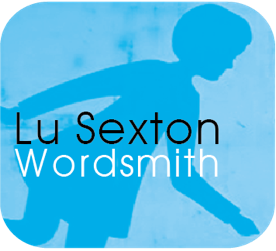This week, we have a guest article by Lu Sexton, book editor, who has helped many of my clients to edit their books.
For many authors, sending your book manuscript to an editor is the first step towards making your work public. Of course, you will feel nervous. I’ve been an editor for 8 years and I’ve never met an author who didn’t worry a bit. Even experienced ones.
You may worry the editor will judge your work and find it wanting. You may want the editor’s ‘stamp of approval’, which is not our role. Or you may fear your editor will change things you don’t want to change.
Understanding the editor’s role helps dispel those fears. Editors do not ‘correct’ or judge your work, or change it into something else. We are on the author’s side. We are trained to be sensitive to the creative process and tactful about how we approach an edit. We understand your fears about having someone critique your work and suggest changes, so we make the editing experience a positive and collaborative one.
The most important thing to understand about working with an editor is that the book remains your work. The editor makes suggestions and provides reasons for them. But ultimately, it’s your decision. If you like it better the way you wrote it, disagree with the reasoning, or want to take on some suggestions, but not all, that’s perfectly normal.
In this post, I’m going to talk through the process of working with an editor and hopefully address any qualms you may have. I’ll cover:
- What an editor does
- How to work with an editor
What an editor does
An editor’s number-one job is to make sure your message, information and ideas are clear for your readers. This involves much more than checking grammar, spelling and punctuation. All authors are very close to their book and their subject. You understand your material so well that it’s hard to consistently put yourself in your reader’s shoes. This is where the editor comes in.
For example, you may present a concept or practice you are so familiar with that you brush over some key underlying principles. The editor will pick up that these principles need more explanation. Or maybe you’ve dug too deep into those underlying principles and got lost down a rabbit hole, potentially confusing the reader. The editor will give you an idea of how to pare the information back and keep the reader on track.
We make sure your ideas flow logically and smoothly, your language is suitable for your readers (not too technical, not oversimplified), and your terminology is consistent. And yes, we also check that your spelling, grammar and punctuation are all in order.
Generally, there are two stages of editing – structural editing and copy editing – though both are not always needed.
Structural edit (the big picture)
- A structural edit, also known as an appraisal, is where the editor looks at the big picture of your book – how the information unfolds, how the ideas flow – your structure.
- The editor will make suggestions for changes, such as where things could be developed or tightened, where information or sections could be reordered, but they won’t make changes in the manuscript. It’s up to you to do the rewriting if you agree with the ideas the editor has suggested.
- Most editors offer this as a written report, maybe with a follow-up phone call. I offer it as a video call, which I record and send to the writer so they can go back over it as many times as they need. I prefer this method as it allows me to discuss the ideas with the writer as we go along. Sometimes we come up with a solution together (two heads are better than one).
- Not all books need a structural edit/appraisal. Some may be ready to go straight to copy edit, especially if you have followed the system in Kath’s Brain-to-Book coaching program.
Copy edit (the detail)
- A copy edit is a line-by-line check of your writing to make sure the meaning is clear, the language is flowing well and there are no grammar, spelling or punctuation errors. It also makes sure everything is consistent. e.g. that you’ve used the same terms throughout, that you haven’t varied spellings of names, organisations etc.
- The editor makes the changes using the track changes function, so you can accept or reject each change.
- For most the changes, the editor will use the comments function to explain their reasoning behind the edit, so you can make an informed choice about whether to accept or reject it. (The editor won’t give an explanation if the change is obvious, such as a spelling error, or technical, such as a punctuation issue.)
How to work with an editor
If you’ve worked through Kath’s Brain to Book Coaching Program, the structure of your book will be sound (as long as you stuck to the system) so you will most likely be ready to go straight to copy-editing stage.
If you’ve written the draft on your own, you’ll probably need a structural edit/appraisal first. As you know, transforming the matrix of information in your head into a linear structure is a difficult task. It’s highly likely you went off track a few times.
The first step is to have a conversation with the editor so they can understand where you are up to with your project and how they can best help you. The conversation also gives you an idea of whether they are the right editor for you. You are trusting them with your precious intellectual property, so you need to feel absolutely confident. I recommend talking to a few editors to make sure you find the one that seems to understand you, your audience and your intentions.
Most editors will ask to see a sample of your work before they give you a quote. This is to make sure that they are quoting accurately for the services you need. Be wary of editing services that offer a per-word cost without viewing your work; the service level offered might not be suited to your needs.
Once you’ve agreed to the quote and a timeline, you hand your work over and take a well-earned break from your book while the editor works on it. The editor will need at least a week with your book, and you will need to factor in time after the edit to work through their feedback.
***
Sending your manuscript to an editor is an exciting step. And yes, it is naturally daunting. Even though you ultimately want to share your book with the world, actually getting feedback can be nerve-wracking (cue imposter syndrome). But when you remember that the editor is on your team, it’s less so. Their number-one job is to help you make your book the best it can be.
Lu Sexton, Accredited Editor (Institute of Professional Editors)
Lu works with business writers and fiction writers. She copy edited Kath’s latest book, Overnight Authority, and learnt a thing or two that she can use in her own work, which is always a bonus of editing books by experts.



